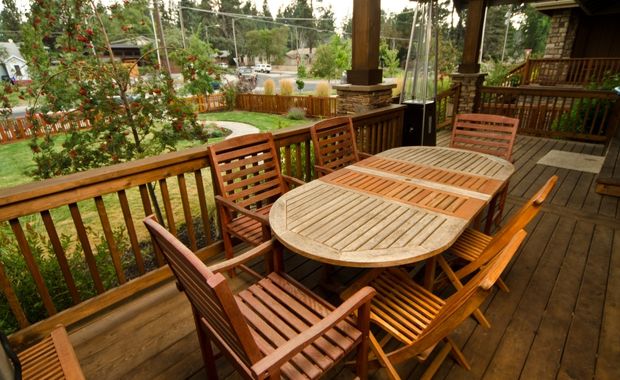Transforming your outdoor spaces with Western Interlock pavers can enhance both the beauty and functionality of your Tigard home. Whether you’re creating a new patio, walkway, driveway, or garden path, Western Interlock pavers offer durability, aesthetic appeal, and versatility. However, achieving a professional and lasting result requires careful planning and proper installation. This comprehensive guide will walk you through the essential steps for installing Western Interlock tigard , ensuring your project is successful from start to finish.
1. Planning and Design
Before breaking ground, it’s crucial to have a clear plan and design for your project. Start by determining the purpose of the area you’re paving. Is it a patio for entertaining, a walkway to guide guests, or a driveway that needs to support vehicles? Once you’ve identified the purpose, consider the size, shape, and layout of the space. Western Interlock offers a wide range of paver styles, colors, and patterns, so take the time to select the ones that best complement your home’s architecture and your personal style.
Creating a detailed sketch of the area can help you visualize the final result and identify any potential challenges, such as slopes or drainage issues. Additionally, check local building codes and regulations in Tigard to ensure your project complies with any restrictions or requirements.
2. Gathering Materials and Tools
Once you have a plan in place, it’s time to gather the necessary materials and tools. For a successful Western Interlock installation, you’ll need:
- Pavers: Choose the specific style, color, and quantity based on your design.
- Base material: Typically, a crushed gravel or road base material is used to create a stable foundation.
- Sand: Bedding sand is placed over the base material to ensure even paver placement.
- Edging material: Plastic or metal edging is used to keep the pavers in place and maintain the integrity of your design.
- Compactor: A plate compactor is essential for compacting the base material and sand, creating a solid foundation.
- Leveling tools: A level, string line, and screed board will help you achieve an even surface.
- Cutting tools: A wet saw or chisel and hammer may be needed to cut pavers to fit your design.
3. Preparing the Site
Proper site preparation is key to a long-lasting paver installation. Start by marking the area with stakes and string, ensuring the layout matches your design. Next, excavate the area to a depth that accounts for the base material, sand, and paver thickness. Typically, a total depth of 8-12 inches is recommended, depending on the type of traffic the area will endure.
After excavation, clear the site of any debris, roots, or rocks that could interfere with the base material. It’s also essential to ensure proper drainage by sloping the area slightly away from your home or other structures.
4. Installing the Base Material
The base material is the foundation of your paver installation and plays a critical role in preventing shifting and settling. Spread a layer of crushed gravel or road base material evenly across the excavated area. The base should be installed in 2-3 inch layers, with each layer compacted using a plate compactor. Compacting between layers ensures a solid, stable foundation that can support the weight of the pavers and any additional loads.
Aim for a total base thickness of 4-6 inches for patios and walkways, and 6-8 inches for driveways. After compacting the final layer, use a level to check the surface and make any necessary adjustments.
5. Laying the Sand Bedding
Once the base material is compacted and level, it’s time to add the bedding sand. Spread a 1-inch layer of sand over the base material, ensuring it is evenly distributed. Use a screed board to level the sand, creating a smooth surface for the pavers to rest on. Avoid walking on the leveled sand to prevent disturbances before the pavers are laid.
6. Laying the Pavers
With the sand bedding in place, you can begin laying the pavers according to your design. Start at one corner of the area and work your way out, placing the pavers carefully to avoid disturbing the sand. Use a rubber mallet to tap each paver into place, ensuring they are level and evenly spaced.
If you need to cut pavers to fit around edges or obstacles, use a wet saw or chisel and hammer to make precise cuts. Be sure to wear appropriate safety gear when cutting pavers.
7. Installing Edge Restraints
Edge restraints are essential for maintaining the integrity of your paver design and preventing shifting over time. Install plastic or metal edging along the perimeter of the paver area, securing it with spikes. The edging should be tight against the pavers to hold them in place.
8. Finishing Touches
Once all the pavers are laid and the edging is installed, use the plate compactor to compact the entire surface. This helps to settle the pavers into the sand bedding and ensures a solid, even surface. After compacting, spread a layer of sand over the pavers and sweep it into the joints. This joint sand helps lock the pavers in place and prevents weeds from growing between them. You may need to repeat this process a few times until the joints are fully filled.
Conclusion
Installing Western Interlock pavers in your Tigard yard is a rewarding project that can significantly enhance the beauty and functionality of your outdoor spaces. By following this comprehensive guide and taking the time to plan, prepare, and execute each step carefully, you can achieve professional results that will last for years to come. Whether you’re a seasoned DIY enthusiast or a first-time installer, Western Interlock pavers offer the durability, versatility, and aesthetic appeal needed to transform your yard into a beautiful and lasting landscape.



